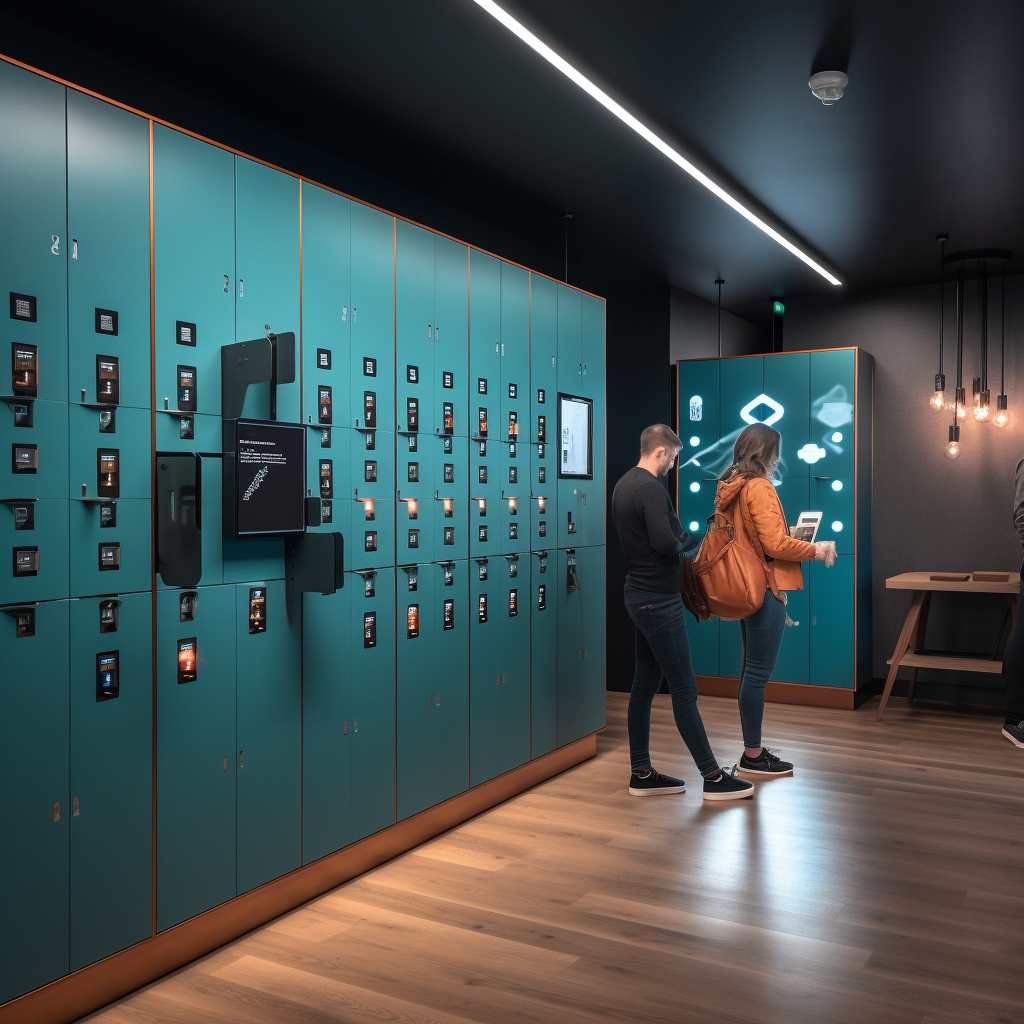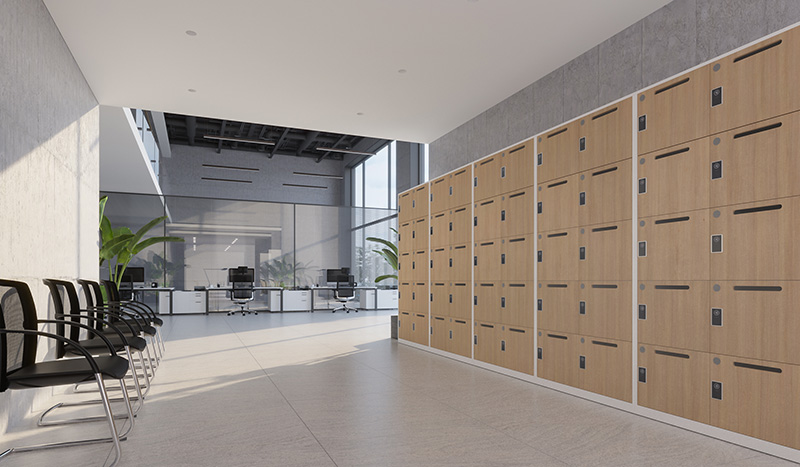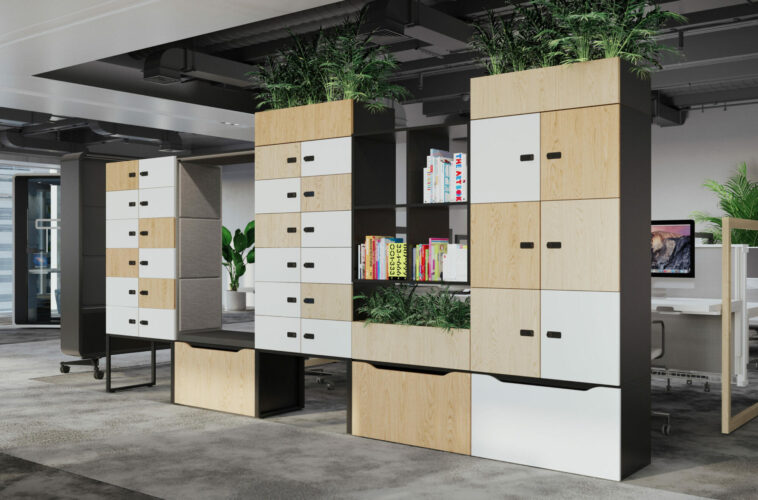Lockers protect personal items or valuables and are available in various sizes for public use in schools, gyms, workplaces, transportation hubs, and people’s homes. These lockers are made of strong materials like steel or metal and have built-in locks or padlocks to keep your things safe and private.
They make it easy to organize and keep things safe while working out or for long-term storage of documents and tools. With practical design and widespread availability, locker storage systems are essential for Storage Solutions.
Functional Aspects of Locker Storage

Locker storage keeps your personal belongings safe and in order in various settings. This part talks about important things:
Security Features
Lockers are safe because they have strong locks, long-lasting materials, and reinforced designs. Modern security systems like fingerprint scans, digital passcodes, and RFID technology make things safer. Some have cameras or alarms that make them safer and more reliable.
Versatility and Customization
Lockers cater to diverse needs in education, workplaces, gyms, or public spaces, offering various sizes, layouts, and designs. Customization options, such as adjustable shelves or compartments, efficiently accommodate different items.
Integration with Technology
Tech is built into modern lockers, so they can be monitored from afar using the Internet of Things. Touchscreens make the app more convenient, and smartphone apps allow you to enter and exit without a key or being physically present. Smart systems make it easier to keep track of inventory, which improves total efficiency and marks a shift toward storage solutions that are easier for people to use.
Applications and Utilization of Locker Storage
Different industries use locker storage in many ways beyond just keeping. This part talks about how it’s widely used in public places, businesses, schools, and other places where people gather, meeting a wide range of personal storage needs.
Educational Institutions and Student Use
School lockers make storing things like textbooks, electronics, and sports gear safe, making it easier to stay organized and lighter to carry big things. In addition, they teach students to be responsible by giving them a place to store their things.
Commercial and Workplace Applications
Lockers at work help workers keep their personal belongings, work-related materials, and uniforms organized, which keeps the workplace clean. Lockers also give customers a place to store their things while they visit or do activities in places like shopping malls and gyms.
Public Spaces and Personal Storage Needs
Lockers in public places are a good way to store things temporarily. People can temporarily store their bags in airports, train stops, and bus terminals. In the same way, lockers help people store their things safely while meeting their storage needs in public places like parks and gyms.
Comprehensive Benefits of Locker Storage

Locker storage is useful for more than just saving things. This part details these benefits, focusing on how locker systems improve safety, make the best use of the room, make life easier, help the environment, and offer affordable options.
Enhanced Security and Privacy
Lockers are safe because they have strong locks, materials, and modern features like facial scans or digital passcodes. Individualized sections also protect privacy, which helps users trust each other.
Optimization of Space and Organization
Locker systems come in different shapes and sizes to meet various storage needs. Their flexible designs, which include shelves or compartments that can be adjusted, make good use of the room and improve organization overall.
Facilitation of Convenience and Accessibility
It’s safe and easy to get to things that are locked up. You can get in without a key or your phone because it is integrated with technology.
Contribution to Environmental Sustainability
Locker systems make it easier to reuse rooms, meaning less new construction is needed. Materials often have parts that can be recycled, which is good for the earth and encourages good storage habits.
Economic and Cost-Efficient Solutions
Lockers make efficient use of the space and contribute to the orderliness of the area, so they require fewer storage cabinets and shelving units. Their long life means less money spent on repairs, and better security features could protect users from theft or harm costs.
Future Trends and Innovations in Locker Storage
Emerging Technologies in Locker Security
New security technologies are affecting the future of locker storage. Biometrics, AI, and new ways of authenticating people are changing security. Fingerprint or iris scanning, for example, ensures the scan is accurate, so standard keys aren’t needed as much.
AI-driven monitoring and predictive analytics make things safer by finding strange behavior and making locker systems harder for people who aren’t supposed to be there to get into. Adding encryption and blockchain to locker systems makes them even safer by ensuring that data is always correct.
Sustainability and Eco-friendly Designs
Eco-friendly lockers are made with sustainability in mind. Future systems will use recycled or renewable materials to have less effect on the earth. To help achieve global sustainability goals, installing solar-powered locks or other energy-saving technology in lockers is a great idea.
Integration with the Internet of Things (IoT) and Smart Connectivity
A big trend is for locker storage to link to the Internet of Things and be smart. IoT-enabled lockers let you monitor and track things in real-time. Smart sensors collect data on how things are used for predictive repair and resource optimization. Combining mobile apps and cloud-based systems allows lockers to be easily accessed from smartphones, with digital keys or remote unlocking available.
These linked systems make things run more smoothly and give users a better experience, making smarter locker storage options possible.
Challenges and Considerations

Security Concerns and Mitigation Strategies
Mitigation strategies involve robust measures like encryption, regular lock maintenance, and implementing biometric or RFID technology. Security audits and educating users on best practices help mitigate risks, ensuring item protection and user confidence.
Accessibility and Inclusivity Factors
When designing lockers, it’s important to ensure everyone can use them, even people with disabilities. Wheelchair users need solutions, and locker heights need to be able to be changed. Ergonomics must be carefully thought through when designing for a wide range of people to encourage acceptance across all groups.
Maintenance and Longevity
It can be hard to keep lockers working properly. As part of regular maintenance, parts likely to break down are checked for damage and fixed as needed. Cleaning methods and long-lasting materials are used to keep hygiene standards high, and repairs done on time extend the life of lockers, lowering the replacement cost. Maintenance plans must be followed regularly for long-term effectiveness.
Maximizing Potential through Innovation
The future of closet storage looks good, and new ideas will surely come up. You must use new security technology, put eco-friendly designs first, and add smart connections to get the most out of it.
Some ideas for improving the user experience are to spend money on strong protection, eco-friendly materials, and the Internet of Things (IoT). Maintenance and training are very important for getting the most out of something. By following these trends, locker storage will become a flexible, safe, and environmentally friendly way to meet a wide range of storage needs.




